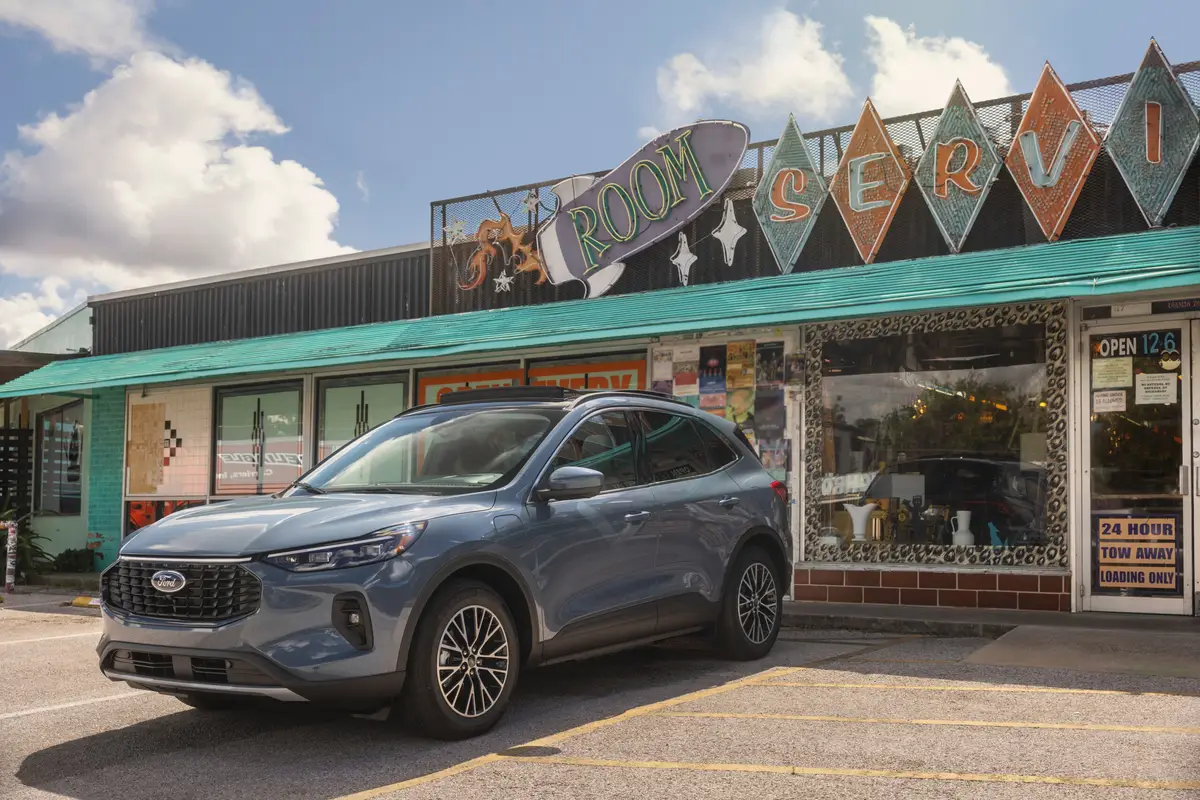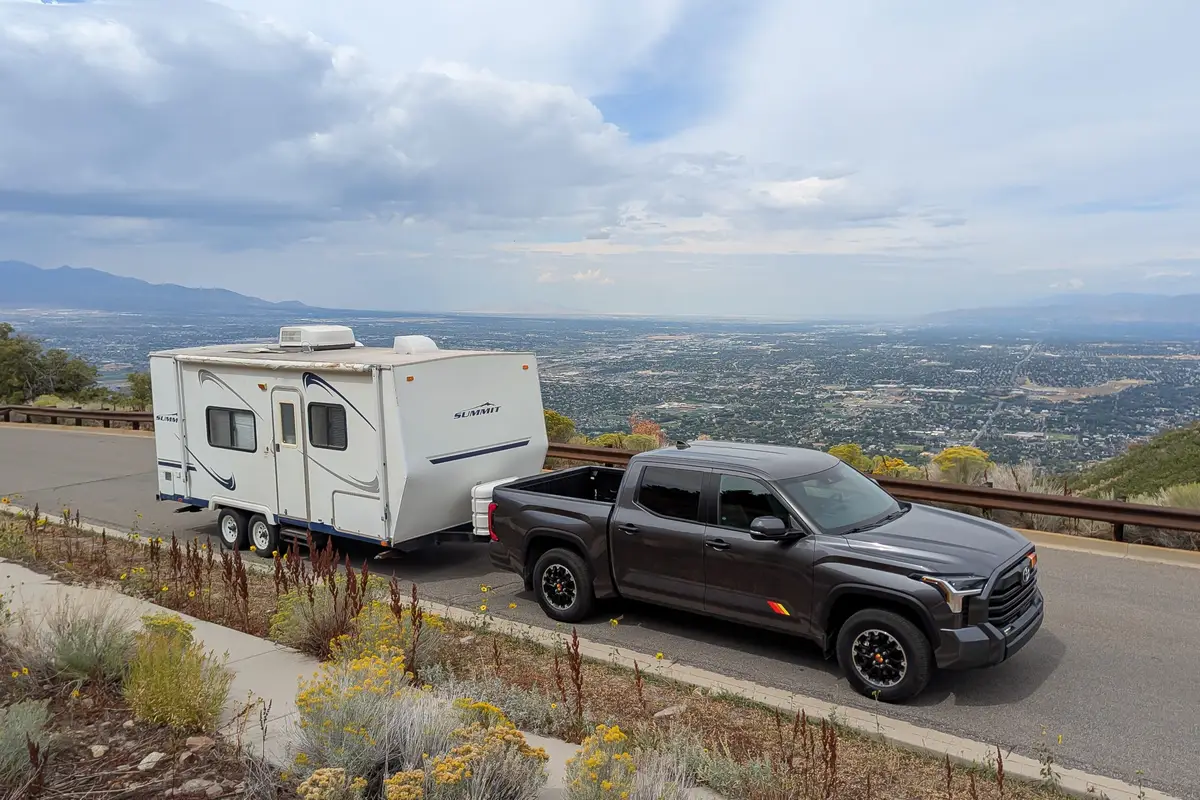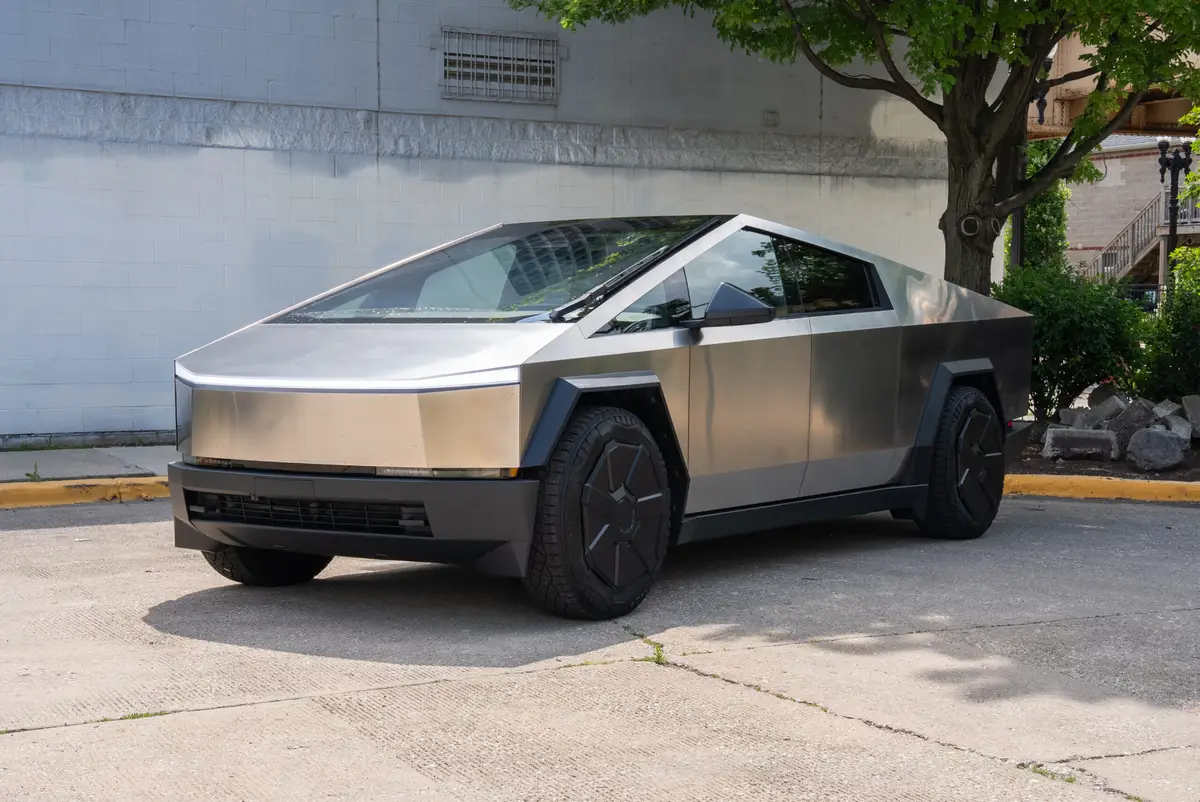washingtonpost.com's view
Sharp Edges and No Apologies
2004 Cadillac SRX
I’ll put this delicately so as not to offend those who are easily offended by things risquéé.
But after driving the 2004 Cadillac SRX sport-utility vehicle, I can think of no more appropriate way to say it.
General Motors Corp. has discovered the Flipped Bird School of Design.
Allow me to explain.
The FBSD mission is to provoke. It cares not whether it offends or pleases, as long as it is noticed. It is anti-me-too, inherently controversial. It appeals to rebels with and without a cause, people who are willing to test the limits.
When successful, the FBSD approach yields icons. Think of Gustave Eiffel’s tower in Paris, or Elvis Presley’s onstage costume. Both endured public opprobrium at introduction. Now, both are cherished for being one-of-a-kind.
Of course, when an FBSD concept fails, it fails miserably. Think of Ford’s Edsel.
But here’s betting that the sharp creases, extreme angles and super-large glass sunroof (5.6 square feet) of the Cadillac SRX will be a rousing success. It’s a wager based on empirical observation.
My wife, Mary Anne, and I took the SRX to a recent Washington Redskins home football game. We were mobbed.
People were all over the SRX — oohing and ahhing. Comments: “That’s sharp!” and “That’s hip!” and “Wow! Ain’t no other SUV looks like that!”
That’s exactly the point of FBSD, and GM almost blew it. The corporation’s gray suits in 1998 initially rejected designer Wayne Cherry’s creased new look for Cadillac. They said it was too radical.
But GM Chairman G. Richard Wagoner later decided that the dowager Cadillac division could not afford to play it safe. He overruled the gray suits. That was a gutsy good move, as evidenced by the popularity of the wide-angled full-size Cadillac Escalade SUV, the so-sharp-it-cuts Cadillac CTS sedan, and the high head-turning quotient of the mid-size SRX and the coming-soon Cadillac SLR Roadster.
One can argue that looks aren’t everything. But there is no quibbling that good and different looks are needed to get most people looking and, in this case, driving.
I drove the 4.6-liter, 320-horsepower V-8 version of the SRX. A 3.6-liter, 260-horsepower model is available.
The SRX comes with standard rear-wheel drive, as did the tested version, or with optional all-wheel-drive.
The computer-controlled all-wheel-drive system maintains a 50-50 torque split between front and rear wheels. It delivers that twisting force by way of three open differentials — gear systems that transfer power from the transmission to the driving axles. The all-wheel-drive SRX has differentials front, center and rear.
Power in the all-wheel-drive model automatically shifts from wheel to wheel based on need — from slipping to gripping wheels.
But even in the tes ted rear-wheel-drive vehicle, traction and stability were excellent, thanks to the standard use of traction control, anti-yaw and other stability-control devices.
Acceleration in the SRX is “by wire” — meaning that it is accomplished by computers and sensors instead of a traditional mechanical linkage between the accelerator pedal and throttle.
Cadillac has a winner here. Much credit goes to FBSD styling. But it also goes to the executives who had guts enough to finally approve it. That deserves a five-finger salute.
Nuts & Bolts
Concern: Electronics. What happens if a throttle sensor fails? GM engineers say the vehicle is equipped with redundant systems to get you home safely. We’ll see.
Praise: Great exterior and interior styling, augmented by high-quality materials. Very nice additional touches, such as rear sub-floor storage compartments in models without optional third-row seats.
Head-turning quotient: Best-looking S V in ay size category at any price.
Ride, acceleration and handling: Triple aces. The SRX represents an excellent compromise between SUV and sedan handling. Credit the use of GM’s patented Magnetic Ride Control in the test vehicle.
Body style/layout: Based on the same Sigma platform used for the Cadillac CTS sedan. It has four side doors and a rear hatch. Front engine, rear-wheel or all-wheel drive.
Engines/transmission: A 4.6-liter, 320-horsepower V-8 (315 foot-pounds of torque), or a 3.6-liter, 260-horsepower V-6 (252 foot-pounds), both of which are linked to a five-speed automatic transmission that can also be operated manually. These horsepower and torque numbers are the latest available.
Capacities: The SRX has standard seating for five people, and seating for seven with optional third-row seats. Cargo capacity is 70 cubic feet. Towing capacity ranges from 1,000 to 3,500 pounds, depending on model and equipment chosen. Fuel capacity is 20 gallons — and regular unleaded gasoline is okay.
Mileage: I averaged 19 miles per gallon in combined city/highway driving.
Safety: All the safety money can buy, including side and head air bags and rollover-resistance technology.
Price: Base price on the tested V-8 is $46,300. Dealer invoice price on that model is $42,828. Price as tested is $49,995, including an estimated $3,000 in options and a $695 destination charge.
Purse-strings note: Compare with Acura MDX, BMW X5, Lexus RX 330, Lincoln Aviator, Mercedes-Benz ML320, Nissan Pathfinder Armada, Volvo XC90 and Volkswagen Touareg.
Latest news



